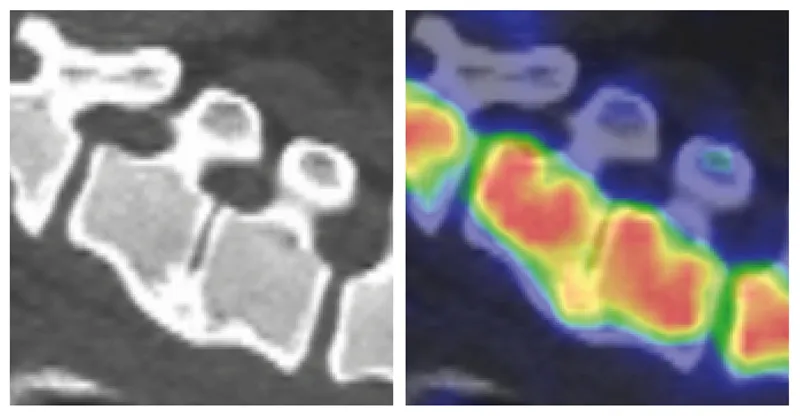
PET-CT from test subject, using 18F bone tracer, demonstrating solid fusion and continuing active bone remodelling at the site of Xcyte implantation. Uptake of the tracer at the implantation site suggests a fully vascularised graft.
All too often, today’s bone grafts and bone graft substitutes can lead to unsatisfactory outcomes. Whether using the patient’s own bone (autograft) or a processed graft from another individual (allograft), outcomes frequently include unpredictable healing or failures. Autograft transplants, for instance, both increase surgery time and costs and have the potential for significant morbidity. Allografts, meanwhile, are processed from cadaveric tissue, which is less effective than autograft and carries a risk of infection. For pets, owners and surgeons, the need is clear for a synthetic alternative: One that is documented to safely and reliably ensure predictable bone healing and fusion.
